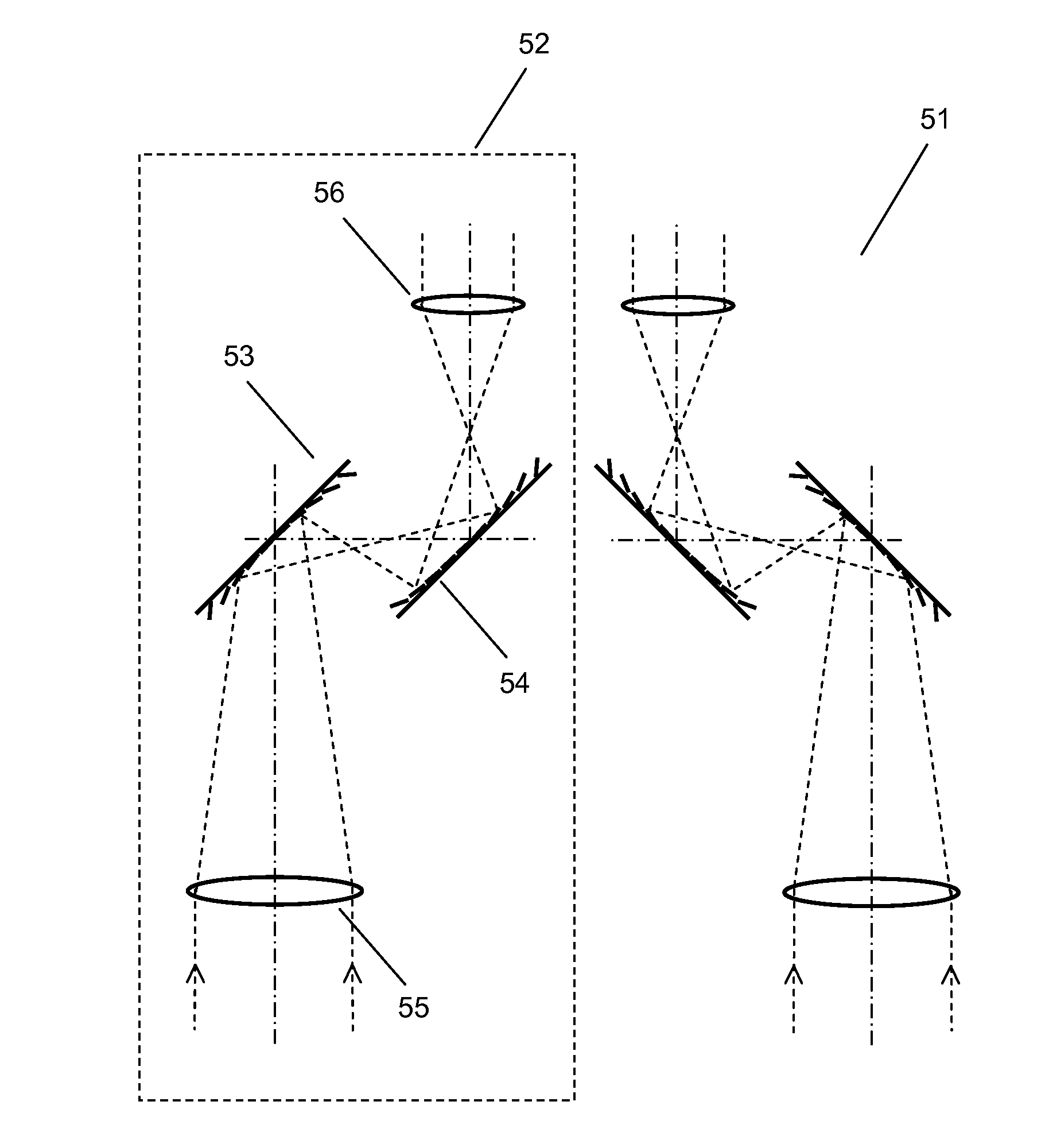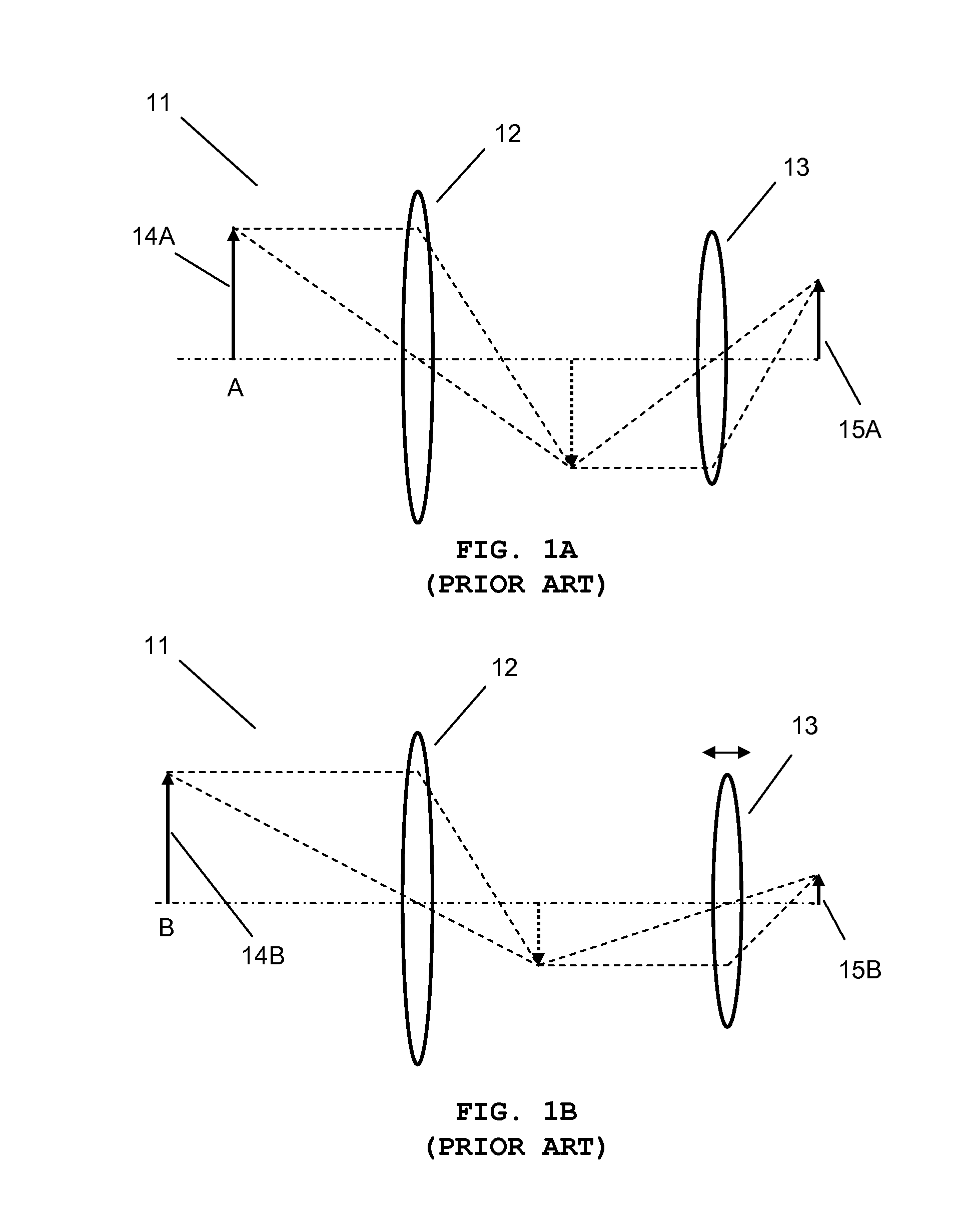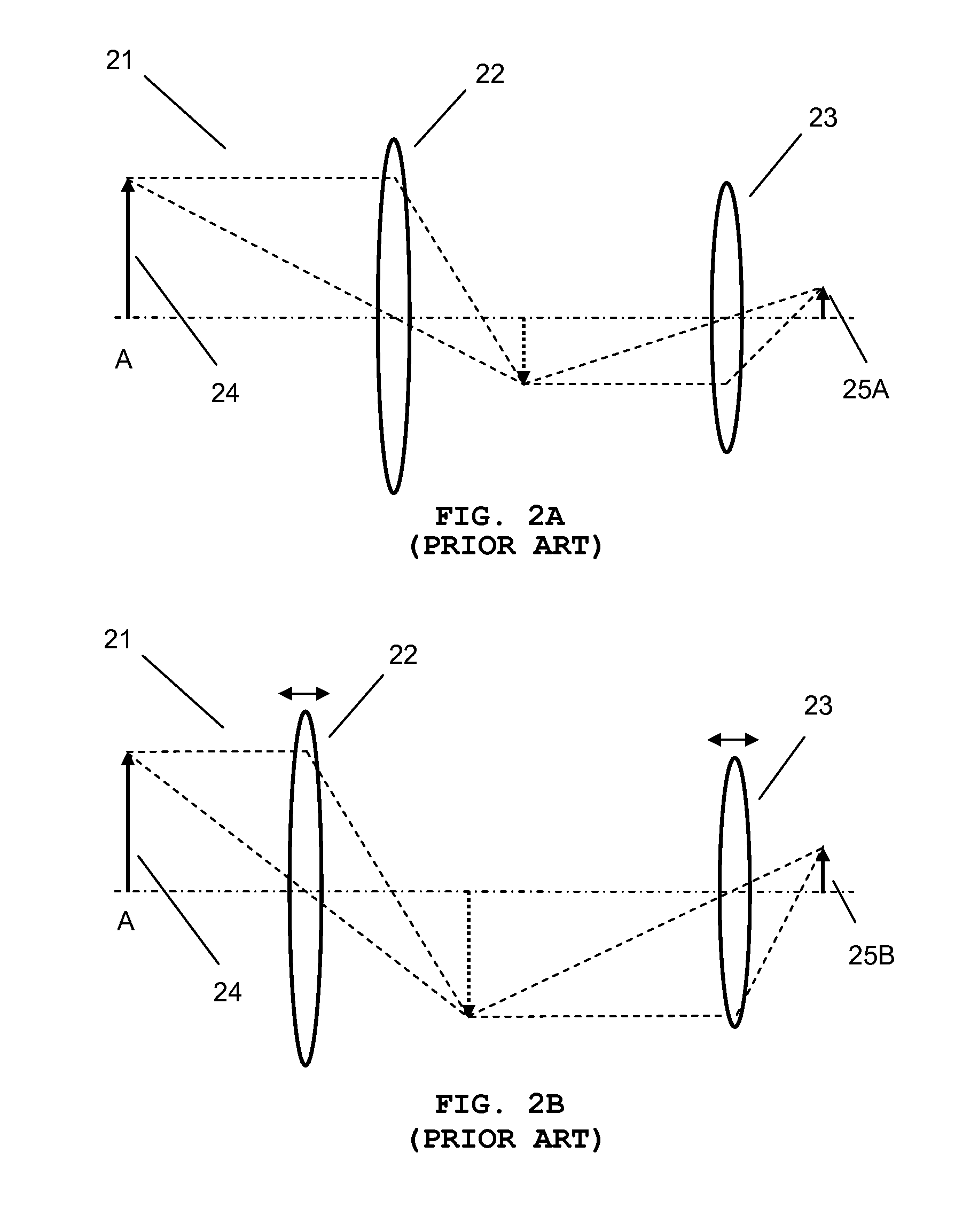Binoculars with micromirror array lenses
a technology of micromirror array and binoculars, which is applied in the field of binoculars, can solve the problems of poor image quality, wear and tear, and adversely affect the portability of binoculars, and achieve the effects of low cost, light weight and high image quality of binoculars
- Summary
- Abstract
- Description
- Claims
- Application Information
AI Technical Summary
Benefits of technology
Problems solved by technology
Method used
Image
Examples
Embodiment Construction
[0056]The present invention will now be described in detail with reference to embodiments thereof as illustrated in the accompanying drawings. In the following description, numerous specific details are set forth in order to provide a thorough understanding of the present invention. It will be apparent, however, to one skilled in the art, that the present invention may be practiced without some or all of these specific details. In other instances, well known process steps and / or structures have not been described in detail in order to not unnecessarily obscure the present invention.
[0057]A pair of binoculars provides three-dimensional magnified images using two optical units. These two optical units are configured to provide images formed from at slightly different angles so that a viewer can see a three-dimensional image. The binoculars typically have focusing function to accommodate changes in distance between an object and the binoculars. In addition, the binoculars can have zoom...
PUM
 Login to View More
Login to View More Abstract
Description
Claims
Application Information
 Login to View More
Login to View More - R&D
- Intellectual Property
- Life Sciences
- Materials
- Tech Scout
- Unparalleled Data Quality
- Higher Quality Content
- 60% Fewer Hallucinations
Browse by: Latest US Patents, China's latest patents, Technical Efficacy Thesaurus, Application Domain, Technology Topic, Popular Technical Reports.
© 2025 PatSnap. All rights reserved.Legal|Privacy policy|Modern Slavery Act Transparency Statement|Sitemap|About US| Contact US: help@patsnap.com



